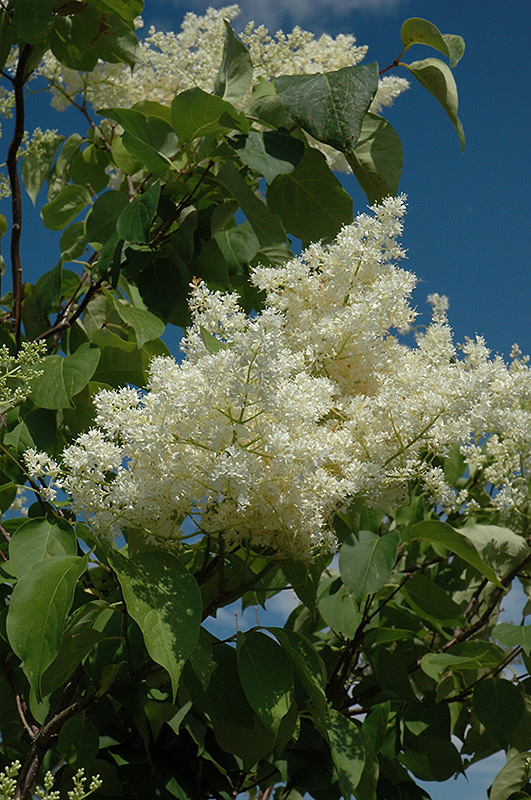Plant Finder
Ivory Silk Tree Lilac (tree form)
Syringa reticulata 'Ivory Silk (tree form)'

Ivory Silk Tree Lilac (tree form) flowers
Ivory Silk Tree Lilac (tree form) flowers
(Photo courtesy of NetPS Plant Finder)
Height: 25 feet
Spread: 20 feet
Sunlight:
![]()
![]()
Hardiness Zone: 3
Description:
An exotic semi-tropical accent shrub or small tree adorned with massive dangling panicles of pinkish-white flowers in early summer followed by dazzling red, coral and white berries; makes a wonderful street or boulevard tree for warm climates
Ornamental Features
Ivory Silk Tree Lilac (tree form) features showy plumes of fragrant creamy white flowers rising above the foliage from late spring to early summer. It has dark green deciduous foliage. The pointy leaves do not develop any appreciable fall color. The smooth dark red bark adds an interesting dimension to the landscape.
Landscape Attributes
Ivory Silk Tree Lilac (tree form) is a dense deciduous tree with a shapely oval form. Its average texture blends into the landscape, but can be balanced by one or two finer or coarser trees or shrubs for an effective composition.
This is a relatively low maintenance tree, and should only be pruned after flowering to avoid removing any of the current season's flowers. It is a good choice for attracting butterflies to your yard, but is not particularly attractive to deer who tend to leave it alone in favor of tastier treats. It has no significant negative characteristics.
Ivory Silk Tree Lilac (tree form) is recommended for the following landscape applications;
- Accent
- Shade
Planting & Growing
Ivory Silk Tree Lilac (tree form) will grow to be about 25 feet tall at maturity, with a spread of 20 feet. It has a low canopy with a typical clearance of 5 feet from the ground, and is suitable for planting under power lines. It grows at a medium rate, and under ideal conditions can be expected to live for 40 years or more.
This tree does best in full sun to partial shade. It prefers to grow in average to moist conditions, and shouldn't be allowed to dry out. It is not particular as to soil type or pH. It is highly tolerant of urban pollution and will even thrive in inner city environments. This is a selected variety of a species not originally from North America.
A NetPS Plant Finder tool
